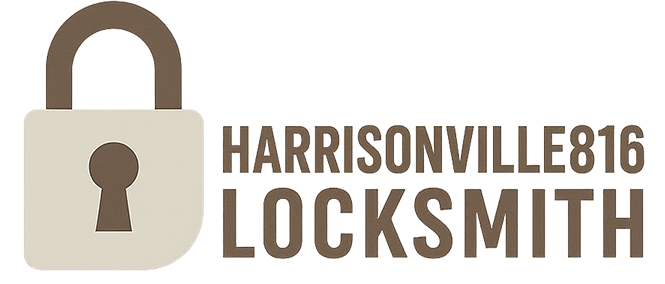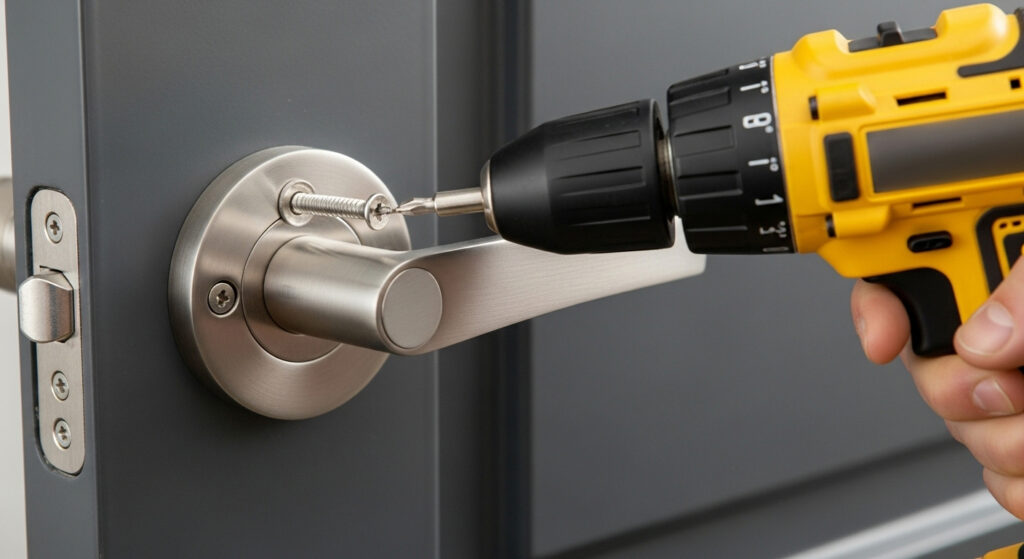These tips focus on risk-aware convenience. We’ll cover where to never hide a key, how to evaluate locations an intruder will try first, how to use decoys and distance to your advantage, and when to skip physical keys entirely in favor of lockboxes or keypad access. You’ll also get checklists, simple operational-security (OPSEC) habits, and a plan for guests, contractors, or property managers.
No single tactic is perfect; security improves when you combine them: better door hardware, reinforced strikes, smart key control, and a spare that’s placed thoughtfully with rules for who knows what. Think layers, not magic hiding spots.
Core Strategies for a Safer Spare Key
Use these as building blocks. Combine two or more for best results.
Never Use “Obvious” Spots
Skip under the doormat, beneath the front-step flowerpot, atop the doorframe, fake rocks by the front path, the mailbox, or the grill’s side shelf. These are the first places someone checks—because they work on many homes.
Separate From the Target
Put distance between the key and the door it opens. A spare hidden away from the main entry—such as in a detached shed, fence line feature, or discreet spot on the non-street side—reduces “first-place” discovery.
Choose Low-Traffic, Low-Observation Spots
Prefer areas shielded from sidewalks, cameras, and neighbors’ lines of sight. Avoid locations where someone can try multiple hides without being noticed (porch cluster, front steps).
Use a Real Lock Box
A wall-mounted or shackle-style lock box with a changeable code beats any “hidden” key. Place it where it doesn’t draw attention (side yard, meter area), shielded from street view and weather. Rotate codes and share them only as needed.
Camouflage With Context
If you must hide a physical key, use an object that belongs in the environment (not novelty “key rocks”). Think inside a weathered hose cap in a side yard, under a removable fence post cap in the backyard, or taped inside a seldom-moved planter base away from the front door. Keep it natural, boring, and non-repetitive.
Limit Knowledge & Rotate
Tell as few people as possible. If you share with a cleaner, pet sitter, or contractor, replace the spot (or lock box code) after the engagement. If a key goes missing—even briefly—rekey or move the spare immediately.
Common Mistakes
(and Safer Alternatives)
Small changes here eliminate the most exploited weaknesses.
-
Hiding at the Main Entry
Front-door hides get discovered first. Alternative: place a lock box on the side or rear, shielded by a utility feature (meter, AC unit) but reachable without trespassing elsewhere.
-
Using Reusable, Predictable Spots
If you’ve used “under the planter” for years, assume others will guess it. Alternate containers and micro-locations (different post caps, different planters) and log the change.
-
Leaving Clues
A clean circle in mulch or a new screw on a fence cap signals tampering. Make hides look unremarkable and weather-consistent; don’t disturb the area more than necessary.
-
Sharing Locations in Texts
Texting “key under blue pot by stairs” creates a record you don’t control. Safer: call, then delete call logs if needed, or use a lock box code that you can change right after use.
-
Storing a Key With Identifying Info
Don’t attach labeled tags with an address or unit number. Use internal codes only. If found, it shouldn’t tell a stranger what it opens.
Pick the Right Spare-Key Option (Quick Decision Guide)
Match your scenario to the safest practical method.
Frequent Guests (Family, Roommates)
Use a wall-mounted lock box near a side entrance. Rotate the code quarterly or after each long-term guest. Keep a second emergency copy stored off-site (trusted relative).
Contractors & Cleaners
Temporary lock box + one-time code window. Change the code after every engagement. Avoid permanent “hidden key.”
Short-Term Rentals
Smart keypad or smart lock with per-stay codes. Physical spare lives in a secure, non-advertised lock box for staff only.
Elder Care & Emergency Access
Lock box with code known to a neighbor or caregiver; register the location with family. Keep the box visible to them but inconspicuous from the street.
Detached Structures (Sheds, Gates)
Weather-rated lock box mounted on the structure’s non-street side. Alternatively, store the spare in the main house and switch the outbuilding to keypad access.
Apartments/Condos
Ask management about policy; many prohibit exterior hides. Use a personal lock box inside an assigned storage cage or with a trusted neighbor on the same floor.
How to Create a Less-Obvious Physical Hide (If You Must)
Physical hides are inherently riskier than lock boxes. If you still want one, layer these principles:
- Move away from the front door. Choose the side or rear of the property, preferably behind a gate or fence.
- Blend with context. Use objects that belong: hose bib cover, fence post cap, birdhouse base, tool cabinet magnet.
- Spread the search space. Pick a spot that requires time to discover, not a single obvious container by the path.
- Make it maintenance-light. Avoid places that collect water or ice; use weatherproof micro-bags to prevent corrosion.
- Don’t repeat. Change micro-location seasonally or after each share. Keep a private note of the current placement.
- Keep it anonymous. No tags or labels; use an internal code only.
After placing, step back to the sidewalk and scan like a stranger. If your eyes are drawn to disturbed soil, new screws,
or a conspicuously “placed” object, rethink the spot.
Small Habits That Dramatically Lower Risk
Tell Fewer People
Limit knowledge to those who truly need it. The fewer who know, the safer the plan.
Rotate Regularly
Change lock box codes and move physical hides after each share or quarterly, whichever comes first.
Separate Systems
Don’t keep car keys or alarm fobs with the spare house key. Reduce the impact if found.
Weatherproofing
Use a small corrosion-resistant sleeve. Moisture betrays hides and ruins keys.
Do / Don’t: Spare Key Edition
Keep this quick list handy for household members and guests.
Use a Lock Box
Change codes, shield from street view, and log who knows it.
Hide Away From the Door
Prefer side/rear placement with natural cover and distance.
Keep Records
Track who knows the spot or code, and when you rotated it.
Don’t Use “Under the Mat”
Or the planter, doorframe, mailbox, or obvious fake rock. Ever.
Don’t Text the Location
Use a call or one-time code instead; change right after use.
Don’t Label the Key
No addresses or unit numbers; use an internal code only.
Workflow for Guests, Sitters, and Contractors
- Assign a method. Lock box with per-visit code, or supervised pickup/return.
- Share privately. Call to share the code; avoid persistent messaging.
- Set rules. Where to park, which door to use, no propping doors, return time.
- Confirm exit. Ask for a quick “locked up” confirmation (call or photo of the locked door).
- Rotate immediately. Change the code or move the hide when the job ends.
For recurring services (cleaning, dog walking), switch to keypad access with time-bounded codes. Keep one physical spare in a private lock box for power or battery issues.
Quick Checklist
- Decide: lock box vs. physical hide (prefer lock box).
- Place away from the front door and street view.
- Blend with context; avoid novelty containers.
- No labels or addresses on the key.
- Share verbally; rotate after each share.
- Keep a private log of location/code and who has access.
- Pair with solid door hardware and lighting.
FAQ
Isn’t any hidden key unsafe? Any physical hide adds some risk. A quality lock box with a rotated code is safer than a hidden key; keypad access is safer still.
What if a neighbor needs access in an emergency? Give them the lock box code and change it immediately afterward. Avoid permanent physical hides known to many people.
Are smart locks a complete solution? They reduce spare-key risk, but keep a physical backup plan (and spare battery) for outages.
Should I keep a spare in my car? Not for your home. If the car is stolen or broken into, your home could be exposed. Keep home spares off-vehicle.
How often should I rotate codes or hides? After every share, or at least quarterly. Immediately rotate if anyone outside your trust circle might have learned the location.
Make Your Spare-Key Plan Safer Today
Choose a lock box, pick a side-or-rear placement, rotate codes regularly, and keep a simple access log. Want help setting up keypad access or rekeying after a lost spare? Call your local locksmith for a quick, secure upgrade.

